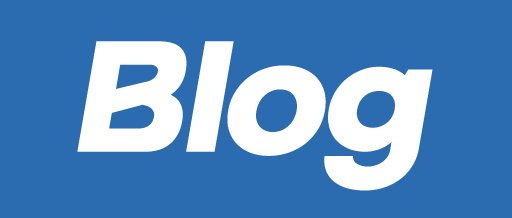Cerebrovascular Center
About the Cerebrovascular Center
Nasaret International Hospital treats for cerebral diseases, which are irreversible if precise and meticulous prevention and initial treatment are neglected. For 30 years we’ve been writing the history of stroke treatment and offering Korea’s 1st modern & Korean traditional medical cooperation system.
We work on the initial response to(of) stroke patients 24 hours a day, 365 days a year in collaboration with Neurosurgery, the Emergency Medicine department, the Rehabilitative Medicine department, the Korean Traditional Rehabilitation Medicine department and the Korean Traditional Medicine department.
We treat for cerebral strokes by accurately checking the condition of the patient through M.R.I (magnetic resonance imaging) and C-T (computerized tomography). In addition, to help acute and chronic brain injured patients resume their normal lives, the rehabilitation center (modern medicine, Korean traditional medicine) and the physical therapy center are operated independently but cooperatively.
The treatment of strokes
At Nasaret International Hospital Cerebrovascular Center, we have established a one-stop system that works faster and more accurately on the initial response to(of) stroke patients through perfecting the collaboration between modern and Korean traditional medicine.
Through MRI (magnetic resonance imaging) and C-T (computerized tomography), etc. we closely examine the patients’ cerebrovascular system to gauge their condition. In addition, we operate an independent rehabilitation center (modern and Korean traditional medicine) and a physical therapy center to help patients with acute and chronic brain injuries return to daily life.
Acute care
| Cerebral infarction with blocked cerebral veins | In the case of a cerebral infarction with blocked cerebral veins, the thrombolytic agent should be injected through the vein within 3 hours of the stroke to dissolve the thrombosis blocking the blood vessel and so allow the blood to flow back into the cerebral veins. |
|---|---|
| Cerebral hemorrhage with burst cerebral veins | Depending on the patient's condition, factoring in things such as the hemorrhage site, the cause, the amount of hemorrhage, etc. surgeons decide whether to treat it with medication or surgery. |
Rehabilitative treatment
Stroke patients are encouraged to rehabilitate as soon as possible, and regular rehabilitative treatments can help them recover and return to daily life.
- 01 Rehabilitative treatments help patients to regain abilities lost due to their stroke, such as walking, speaking and the ability to use their hands freely.
- 02 Rehabilitative treatments help patients to overcome difficulties in everyday life such as dressing, brushing their hair, cooking, shopping or using public transport.
- 03 It also provides social and psychological help in building a stable life after discharge.
| Physical therapy | This treatment method restores the patient’s movement functions through strengthening the muscles in the paralyzed area. We offer therapy for functional recovery; from sitting up to moving. |
|---|---|
| Occupational therapy | Under the guidance of an occupational therapist, patients learn how to get dressed, cook, etc. and learn about special equipment and gear that can help them to eat, get dressed, bathe, etc. Through occupational therapy, we help patients practice and execute the movements needed in daily life. |
| Language therapy | Physicians and language pathologists evaluate stroke patients' aphasia symptoms, overall speaking, listening, and writing abilities and practice language therapy accordingly to facilitate normal communication. |
| Emotional and psychological therapy | Most stroke patients feel a sense of helplessness and it can take several months for them to regain normal vitality. If depression, memory or judgmental disorders occur, we can provide appropriate aid by analyzing the patients’ emotional and psychological condition through counseling. |
Korean Traditional Medical Treatment
| Korean Traditional Herbal Medicine Treatment |
Herbal medical treatment for paralyzed patients consists of three main elements. The first is to determine the cause, based on the patient's symptoms, and prescribe accordingly, the second is to prescribe the medicine in accordance with the severity of the stroke, and the last is to prescribe the medicine in accordance with the Sasang constitution. Depending on the Korean traditional medicine specialist’s diagnosis, we will apply the most suitable treatment for the patient’s condition.
|
|---|---|
| Acupuncture & moxibustion treatment |
|
| Medicinal acupuncture therapy |
|
Modern · Korean Traditional Medical Cooperation System treatment
Nasaret International Hospital is one of the few hospitals in Korea where both modern and Korean traditional medicine specialists work side-by-side.
Therefore, we have a system that can provide the most appropriate and comprehensive modern and Korean traditional medical treatment for each patient. The major collaborative treatments are as follows.
| Cooperation with Neurosurgery | Through cooperation with the department of Neurosurgery, we can offer the medical treatments necessary for our patients such as the use of necessary fluid therapy and anticoagulants to prevent thrombosis in the early stage of strokes, and the use of medications such as aspirin, etc., which is the only approved method for preventing strokes. |
|---|---|
| Cooperation with Rehabilitation Medicine | The rehabilitation of paralyzed patients is essential for their early recovery and the minimization of the aftereffects of a stroke. For this purpose, the appropriate rehabilitative treatment is provided through the mutual cooperation with the department of Rehabilitative Medicine. |
| Cooperation with Cardiology | Strokes are often a secondary reaction to cardiac abnormalities, thus we collaborate with the department of Cardiology to provide an appropriate diagnosis and medication for cardiac diseases to prevent strokes. |
| Cooperation with Integrative Functional Medicine | Through collaboration with the department of Integrative Functional Medicine, we aim to remove the fundamental causes of strokes. We remove heavy metals and environmental hormones that narrow the blood vessels and so recover the function of the mitochondria that play a critical role in the functioning of the cerebrovascular cells to encourage natural recovery. |
| Other cooperation | We actively work in mutual collaboration with relevant medical departments to treat a variety of complications and other symptoms of stroke patients. |

